Unlock the Magic in Your Story Now
Get the Free 20 questions to Ask Before Launching Your Idea workbook when you sign up for occasional updates.
Get the Free 20 questions to Ask Before Launching Your Idea workbook when you sign up for occasional updates.
What Problem Are You Solving?
filed in Marketing, Storytelling, Strategy
 Every venture capitalist will tell you that the best startup pitches focus more on the problem than on the solution. A potential investor may give you just a single sentence to make them understand why your idea will succeed in a world where most people have what they need.
Every venture capitalist will tell you that the best startup pitches focus more on the problem than on the solution. A potential investor may give you just a single sentence to make them understand why your idea will succeed in a world where most people have what they need.
And yet, as business owners we get so caught up in our solution that we forget to focus on the problem we solve and who we solve it for. Framing the problem you solve in just one sentence is a great discipline and one that most businesses have never practiced, which is why the ones that do succeed.
The Single Sentence Problem
Warby Parker—Why do glasses cost as much as an iPhone?
Dropbox—People have no reliable way to store, access, update, save and share their files and data from one place, a USB or an emailed file doesn’t cut it.
Mint—’You spend the majority of your life working for your money, but do you know how your money works for you?’
Dollar Shave Club—Men are paying too much for shave tech they don’t need.
Swish Online—Australian bloggers can’t access quick and easy website support from a human in real time when they have a problem.
Uber—Why can’t I just push a button and get a ride?
Now it’s your turn.
Image by Emil Zakhaviev.
Share this article
The Entrepreneurial Paradox
filed in Strategy
 By definition entrepreneurs undertake to build whatever they are building at considerable risk to themselves. They do what humans are not naturally evolved to do, which is break free from the pack to try something different—something that might not work and may leave them exposed and on the edge, away from the apparent safety and security of the pack.
By definition entrepreneurs undertake to build whatever they are building at considerable risk to themselves. They do what humans are not naturally evolved to do, which is break free from the pack to try something different—something that might not work and may leave them exposed and on the edge, away from the apparent safety and security of the pack.
Mostly entrepreneurs take these risks not because they have to put food on the table, but because they are driven to and because they sense opportunity. When you break away from the pack a lot of your support mechanisms fall away. There is no hiding, no camouflage, there is only truth.
The truth scares people, but it turns out that the truth is at the heart of every opportunity that is realised. Once you’ve gone deep enough to really understand the problems you are trying to solve and once you have found a way to ask and answer the right questions with honesty you are that much closer to realising the potential of the opportunity before you.
I was working with a group of clients recently and we came to some hard conclusions together about the direction their startup was headed and the story they were telling. To their enormous credit they immediately embraced the pivot, understanding that their business would be stronger for it in the long run.
The paradox of course is that it’s even harder to be honest with yourself when you are out there on the edge, exposed and vulnerable, but going to where the pack fears going is where the opportunity lies.
Image by Nathan Rupert.
Share this article
Shortcuts And Workarounds
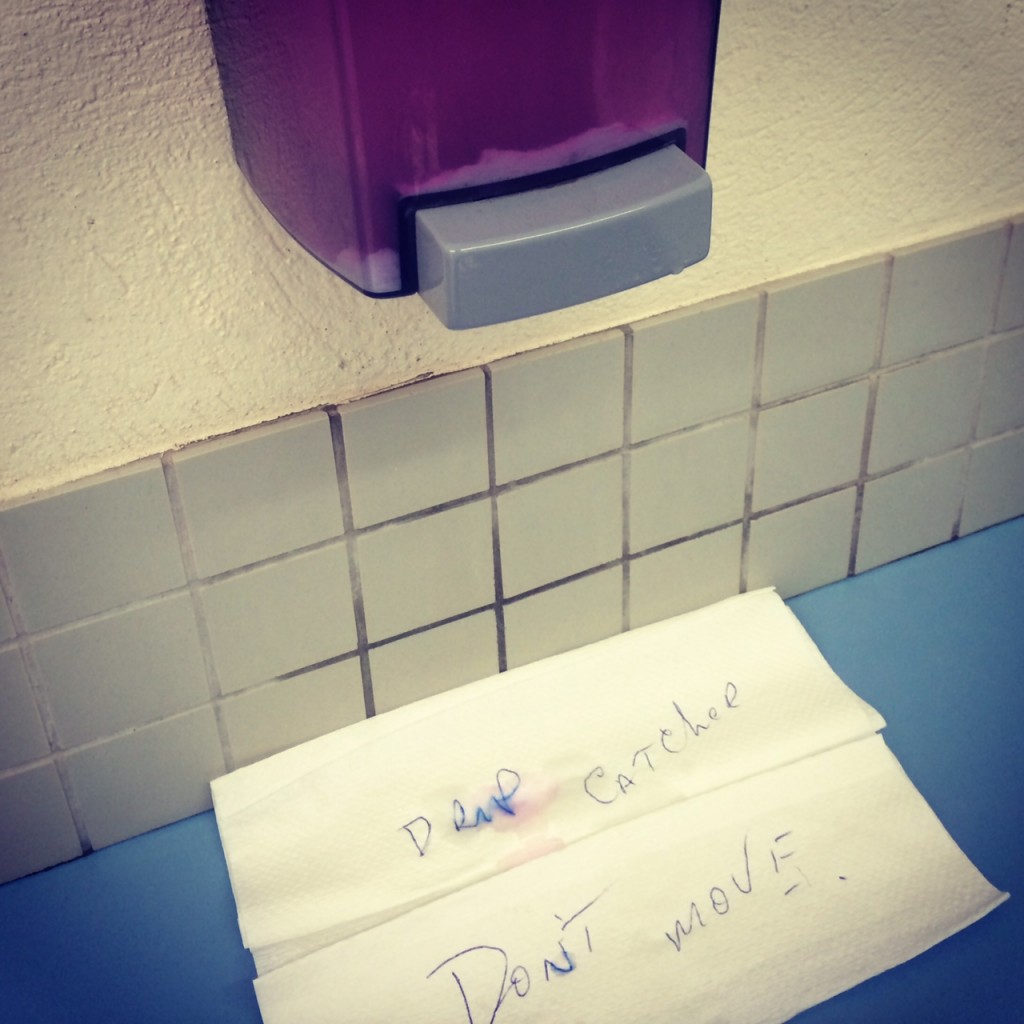 I found this shortcut under the soap dispenser in the ladies toilet at a local cafe and it made me smile. It also made me think about the person who put it there, someone looking for a shortcut in a moment of efficiency
I found this shortcut under the soap dispenser in the ladies toilet at a local cafe and it made me smile. It also made me think about the person who put it there, someone looking for a shortcut in a moment of efficiency
(or procrastination)—as we all do.
What if your shortcut isn’t really a shortcut? What if the only shortcut is actually sitting yourself in the chair and doing the work, or walking across to your boss’s office to have the awkward conversation.
You can waste a lot of time trying to manage the effects of the drip, or you can solve the problem.
Sometimes the best workaround isn’t to find a workaround at all.
Share this article
How Should The Shift To Mobile Affect Your Marketing?
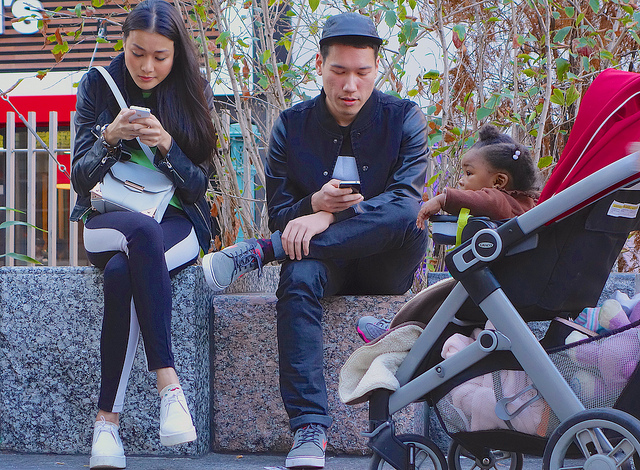 As the tag team of baristas was making my coffee one morning, I noticed the girl with the milk jug take her phone from her apron pocket and begin scrolling through her Facebook feed while she waited for her partner to pull the shot. More proof if I needed it that our mobile devices are no longer a utility—they are a reflex.
As the tag team of baristas was making my coffee one morning, I noticed the girl with the milk jug take her phone from her apron pocket and begin scrolling through her Facebook feed while she waited for her partner to pull the shot. More proof if I needed it that our mobile devices are no longer a utility—they are a reflex.
The statistics about how people are accessing your ideas, content and marketing messages are hardly relevant anymore. The shift to mobile is no longer news, it’s a fact of life.
As marketers we spend a lot of of our time focusing on how and where we are going to reach people. But what’s more important to understand than how people behave, is what’s driving that behaviour and what the opportunity is for you to influence it. It’s not the adoption of the device or platform that’s important, it’s how access to the platform changes how people, feel, think and act that you need to focus on.
It isn’t just where you meet people that counts, it’s how you show up for them within the context of their lives that matters. Yes, you need to meet your customers where they are, but how are you going to make an impact on them when you do?
Image by Ed Yourdon.
Share this article
Winning In The Difference Economy
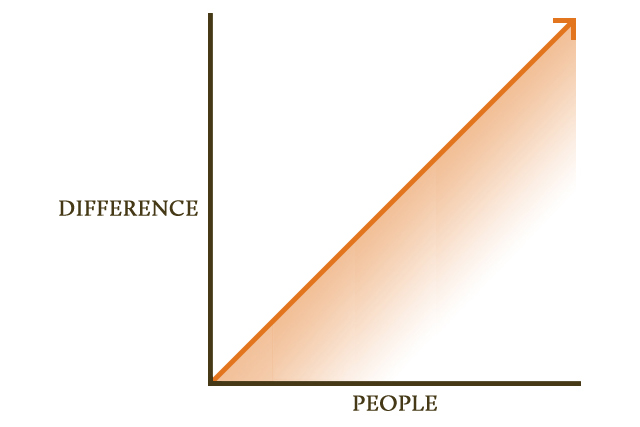 I’m not sure what department stores look like on a Tuesday afternoon in your neighbourhood, but in mine they are like ghost towns. Whole floors full of stock that changes with the seasons waiting to be bought by someone (they don’t know who), who happens to stop by. We all know the stories of the Davids beating Goliaths in the marketplace over the past decade—Borders losing out to Amazon and Blockbuster dying because of Netflix are just two examples.
I’m not sure what department stores look like on a Tuesday afternoon in your neighbourhood, but in mine they are like ghost towns. Whole floors full of stock that changes with the seasons waiting to be bought by someone (they don’t know who), who happens to stop by. We all know the stories of the Davids beating Goliaths in the marketplace over the past decade—Borders losing out to Amazon and Blockbuster dying because of Netflix are just two examples.
Ask any business analyst why this happened and you’ll get a variety of answers. These companies were too slow to respond to shifts in the market, they didn’t embrace digital quickly enough, or they had too many layers of bureaucracy. What this all boils down to is two things.
1. They didn’t meet their customers where they were.
2. They were so focused on operating in the present, that they didn’t see where their customers might be in both the near and distant future.
If we look at some of the runaway business success stories of our time Dropbox, Uber, Warby Parker, Airbnb, Apple, Starbucks and Patagonia we find that they all have something in common. They knew who their customers were or would be and they built their businesses around being responsive to them. Their continued success is powered not by sales teams and marketing departments, but by creating difference for people, one person at a time.
The bigger the difference they create, even in the tiniest niche, the more (not the most) people they touch, the more successful they become.
The businesses that are winning in the difference economy are the ones that impact people on a personal level by staying relevant, they also shape culture by being responsive to the changes that a digital world has enabled.
The difference economy values and rewards businesses that put customer’s needs, wants and unexpressed desires first. Businesses that are built to respond to those needs, not simply to react to changing seasons and upcoming holiday periods. From coffee to computers, travel to data storage, the brands that succeed wildly are the ones that work hardest of all to see their customers before they build a thing.
Share this article
We Need To Stop Telling Customers What We Do
filed in Marketing, Storytelling, Strategy
 I’m driving along behind the white Ezy Tiles van, when we stop at a red light and I get close enough to read their sales pitch, which is an image and a single line.
I’m driving along behind the white Ezy Tiles van, when we stop at a red light and I get close enough to read their sales pitch, which is an image and a single line.
The picture is of three guys wearing dust masks that look like something you’d see in a documentary about chemical warfare. Each one is brandishing some kind of heavy duty drill that it seems could demolish a room in minutes. The dust cloud that surrounds them obliterates the view of the river from the balcony in the background.
“We remove tiles and floors,” the tagline on the white van shouts at me.
“No you don’t,” I can’t help thinking.
“You come into my home and leave a trail of dust and destruction in your wake.”
While I might need old tiles to be removed, what I really want is a smooth, level surface to lay my gorgeous new tiles on.
It goes without saying that your process needs to delight customers every step of the way.
But your customers don’t want to know what you do. They want to know how you’re going to enable them to do what they want to do.
There’s a reason IKEA leaves the instructions and the confusing assortment of screws inside the packaging.
People almost never buy the process. They buy the result.
We really should be selling them what they want to be sold.
Image by Marcus Linder.
Share this article
The Truth About Starbucks And The $4 Coffee
filed in Marketing, Storytelling, Strategy
 Before Starbucks you could buy your morning coffee for a dollar or two.
Before Starbucks you could buy your morning coffee for a dollar or two.
So how was it possible for Starbucks to more than double the price of coffee overnight?
The truth is that Starbucks didn’t actually invent the $4 coffee—they created the $2 experience.
$2 felt like a bargain for the feeling of belonging in a comfy chair at ‘the third place’.
A place we now feel a connection to at the sight of a single green straw, even when we’re not in it.
And a place we didn’t even know we wanted until Starbucks showed us that we clearly did.
As a marketer your job is not to convince people that your product or service is better and therefore worth more. Your job is to find, understand and serve the people who are ready to believe a different story about where the value really lies.
Image by Bart Heird.
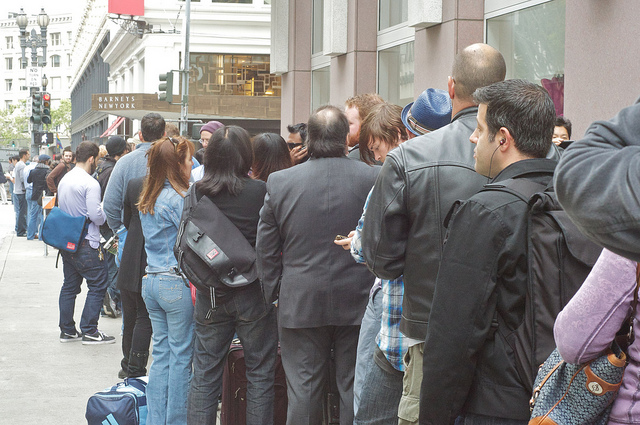 Every time I upgrade my phone the guys at Virgin try to convince me that there are much better options than the iPhone. When they ask me why I prefer the iPhone I never have a definitive answer. It’s not always easy to put that kind of value into words.
Every time I upgrade my phone the guys at Virgin try to convince me that there are much better options than the iPhone. When they ask me why I prefer the iPhone I never have a definitive answer. It’s not always easy to put that kind of value into words.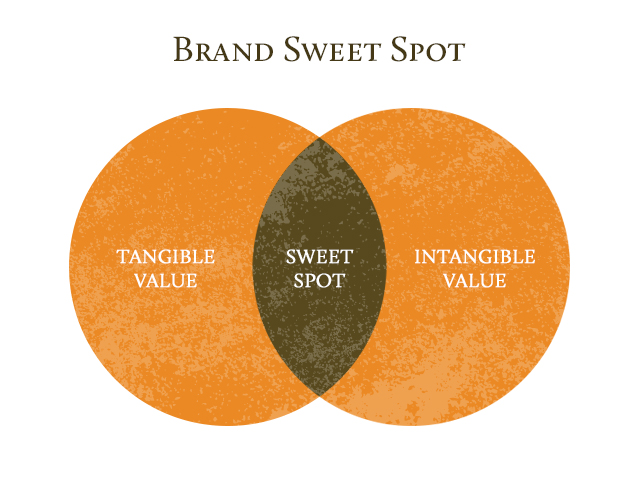
 The middle-aged couple at the garden centre stood with furrowed brows as the sales assistant explained the difference between the varieties of lemon tree. They took a step back and almost looked alarmed when he explained how one particular variety would bear a lot of fruit, but could become tall, straggly and unmanageable. Huge smiles of relief spread across their faces when he finally led them to a tree that would give them less fruit, but only grow to about a metre tall.
The middle-aged couple at the garden centre stood with furrowed brows as the sales assistant explained the difference between the varieties of lemon tree. They took a step back and almost looked alarmed when he explained how one particular variety would bear a lot of fruit, but could become tall, straggly and unmanageable. Huge smiles of relief spread across their faces when he finally led them to a tree that would give them less fruit, but only grow to about a metre tall.
March 12, 2014
Blog Comments: Strategy Or Tactic?
filed in Strategy
When people began blogging over a decade ago blog comments were a real way to engage or add to the discussion. Today the amount of content we can access online has exploded and how we consume that content on the go via mobile devices has changed things. The truth is that a tiny percentage of readers ever leave a comment and some of the most popular single author blogs in the world like Zen Habits don’t have comments at all.
Here are a few things I’ve noticed about blog comments
The number of comments is seen as social proof, or as a way to judge the worthiness of a post.
We assume that if a post is good it will have lots of comments. But a post that might resonate with you may not appeal to someone who likes to comment. Many of the most shared posts on this blog have no comments. I noticed that this bothered my loyal readers who felt the need to comment just to say thanks for writing an article that helped them.
Many blog posts are engineered to invite comments.
Often blog posts end with a question. Sometimes that question adds value, but more often it’s used as a tactic to get more comments.
Older blogs have built communities through comments.
Established blogs became places where readers recongised and connected with the ideas of other readers through comments. That’s getting harder to do these days.
Readers use comments to acknowledge and connect with the writer.
That can be a good thing, but there are better ways for you and I to meaningfully connect.
Readers use comments to show their gratitude.
I love the intention behind that—but there are limits to how many times someone can say, ‘thanks for writing this post, here’s how it helped me.’ in the comments.
I don’t want people to dismiss a post that might be useful to them because it has no comments. I want to empower readers to decide what’s relevant to them. I’m not sure that comments are the best way to make either better writers, or more informed and inspired readers.
I want to spend time writing for you and not trying to massage the end of each post with a question that’s designed to make you comment so that I can show the world that a gazillion people read it. I am happy if each post helps a handful of people to go out there and bring ideas that create difference to the world.
If I am going to build a community around these ideas I believe I need to do that with intention and right now comments are not helping me to do that.
I don’t want you to comment because you feel like you should, or because you feel like you need to pay me back in comments. You’ve already paid with your time, attention and trust. I don’t take any of that for granted for a second.
If you ever want to reach out to me to say anything—even if it’s thanks, you can contact me any time, as many readers do by hitting reply when posts are emailed to you or by email.
So, that’s my very long winded way of explaining why I’ve decided to switch off comments here for now to see how we go. This is not to say that comments won’t work brilliantly for you and your blog.
Today might be the end of comments, but it’s definitely not the end of the conversation.
Image by Eddie Codel.
Share this article